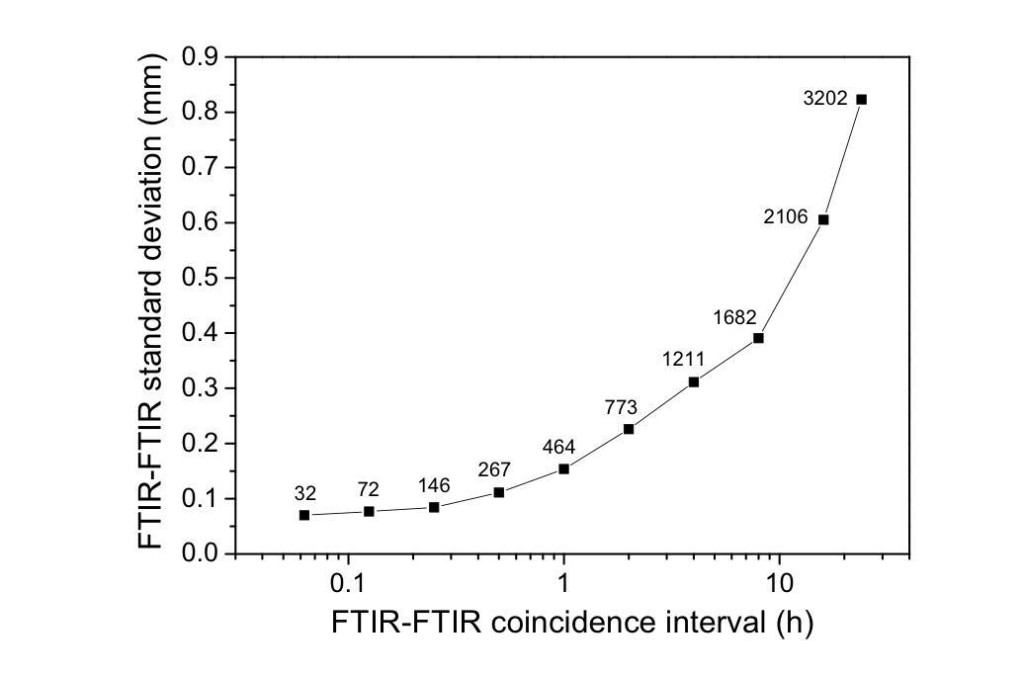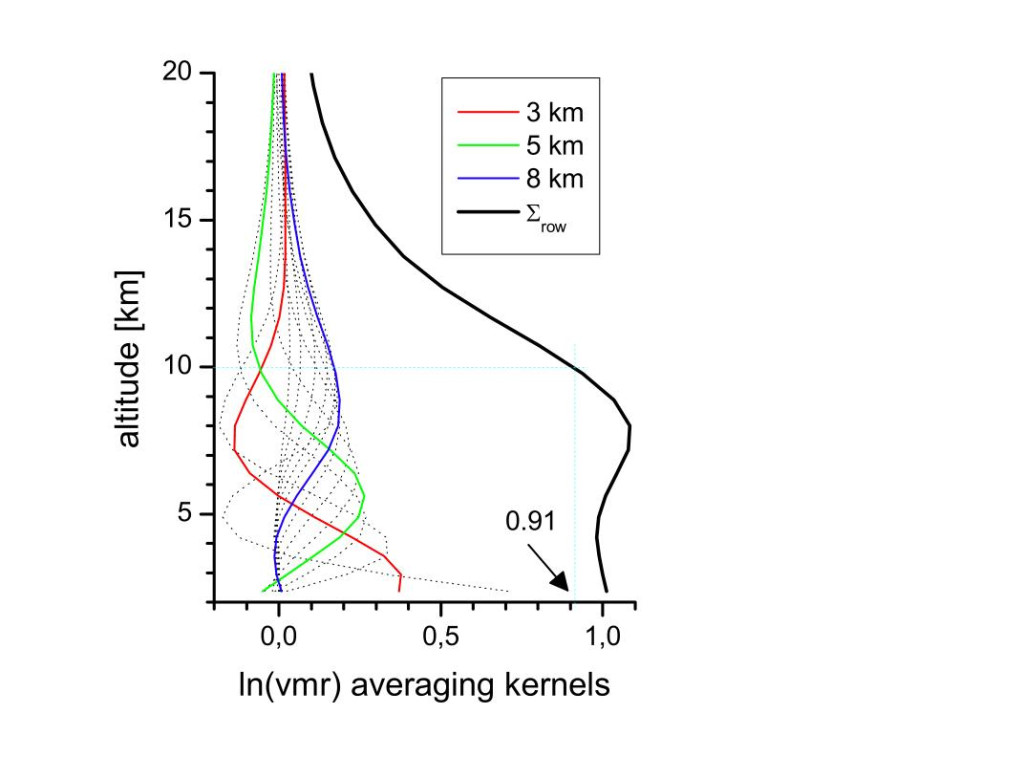A highly variable interference has long been considered the dominant feature of water vapor for practitioners who retrieve atmospheric total column amounts and profiles from infrared solar absorption spectra. Due to the importance of water as a greenhouse gas and its possible long-term trend resulting from changes in the atmosphere and subsequent feedback effects there is renewed effort in extracting water vapor quantities from archived solar spectra, which for some sites stretch back to the 1970's. Several groups in the NDACC InfraRed Working Group (IRWG) community have recently published papers aimed at determining the maximum information content from existing spectral measurements. Two primary tasks are to understand the effect of variability and to determine the vertical extent of the measurements.
Recently Sussman et al. [2009] compared coincident measurements at the European continental NDACC sites at Zugspitze and the two instrument data sets at Jungfraujoch to determine coincidence effects on consistent measurements of integrated water vapor (IWV). Figure 1 shows the standard deviations between IWV measurements from two FTS systems taken at intervals of minutes to several hours. This dramatically illustrates that large variability occurs on sub-diurnal timescales. It thus constrains the time lag for useful coincident measurement intercomparisons to below 1 hour.

Figure 1. (After Sussmann 2009) Standard deviation of IWV in mm H2O vs observation coincidence interval for two co-located FTIR instruments. The point numbers are the number of coincident observations.
The IWV value is dominated by water in the lowest part of the atmosphere. However, quantifying the mixing ratio nearer the tropopause is of importance for understanding atmospheric trends and climate change. The same retrieval technique that can produce the IWV content can be used to derive partial columns at different vertical intervals. These are characterized by the retrieval averaging kernels that are shown in Figure 2 for the NDACC site at Tenerife where the sensitivity falls off rapidly above 8km to 50% at 13km. The interrelation of the humidity and temperature at the tropopause is a controlling feature of the humidity entering the stratosphere. These issues are an important active area of study and using these techniques on the global IRWG spectral archive will reveal long-term changes in some of these factors.

Figure 2. (After Schneider 2010) Typical averaging kernels for ground-based FTIR remote sensing of watwer vapor. Kernels for 3, 5 and 8km are highlighted in red, green and blue respectively and the sensitivity in black.
References
Schneider, M., P. M. Romero, F. Hase, T. Blumenstock, E. Cuevas, and R. Ramos Continuous quality assessment of atmospheric water vapour measurement techniques: FTIR, Cimel, MFRSR, GPS and Vaisala RS92, Atmos. Meas. Tech., 3, 323 - 338, 2010.
Sussmann, R., T. Borsdorff, M. Rettinger, C. Camy-Peyret, P. Demoulin, P. Duchatelet, E. Mahieu, and C. Servais Technical Note: Harmonized retrieval of column-integrated atmospheric water vapor from the FTIR network - first examples for long-term records and station trends, Atmos. Chem. Phys., 9, 8987 - 8999, 2009.